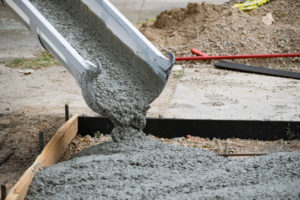CALGreen requires the reuse, recycling, or salvage of at least 65% of the waste from construction and demolition. A previous blog discussed how to reuse water from concrete production. Another source of construction waste is fresh concrete that must be returned to the plant. In times past, the driver would dump that concrete on the ground. Now, however, it’s possible to incorporate fresh concrete into a new batch. ASTM C1798 specifies how to do that without jeopardizing the quality of the new concrete.
The requirements of ASTM C1798, “Standard Specification for Returned Fresh Concrete for Use in a New Batch of Ready-Mixed Concrete,” are in addition to those of the purchaser and the project specifications.
Provisions of ASTM C1798

If the specifications reference ASTM C94 for concrete that may contain returned fresh concrete, the purchaser should specify Option A, which places the responsibility for ensuring that the new concrete meets the purchaser’s requirements on the manufacturer of the concrete.
If the concrete is 90 or more minutes old, use an extended set control admixture. The dose depends on the temperature, setting time, and mixture proportions of the concrete as well as how long it must remain fresh. The manufacturer can incorporate the old concrete into a new batch up to 8 hours after its original mixing time.
The temperature of the old concrete must not exceed 100 F (38 C). If it does, you must discard it. In any case, the temperature of the new concrete must meet the project specifications.
The specified strength of the old concrete must be at least as high as that of the new concrete.
The amount of old concrete in the new batch cannot exceed 50% of the new batch. The manufacturer must adjust the proportions of the new batch to take into account the volume and proportions of the old concrete so that the new batch meets the purchaser’s requirements for proportions, performance, and temperature.
Sustainability of concrete
Making concrete sustainable means reducing its environmental footprint while meeting all performance requirements. Previous blogs have discussed the use of supplementary cementitious materials such as fly ash, slag cement, and even ground waste glass in concrete. Judicious use of these materials can both enhance concrete performance and reduce its carbon footprint.
Reducing the waste of the concrete itself is another strategy to promote sustainability. ASTM C1798 helps you do so without detracting from the quality of the new concrete.
